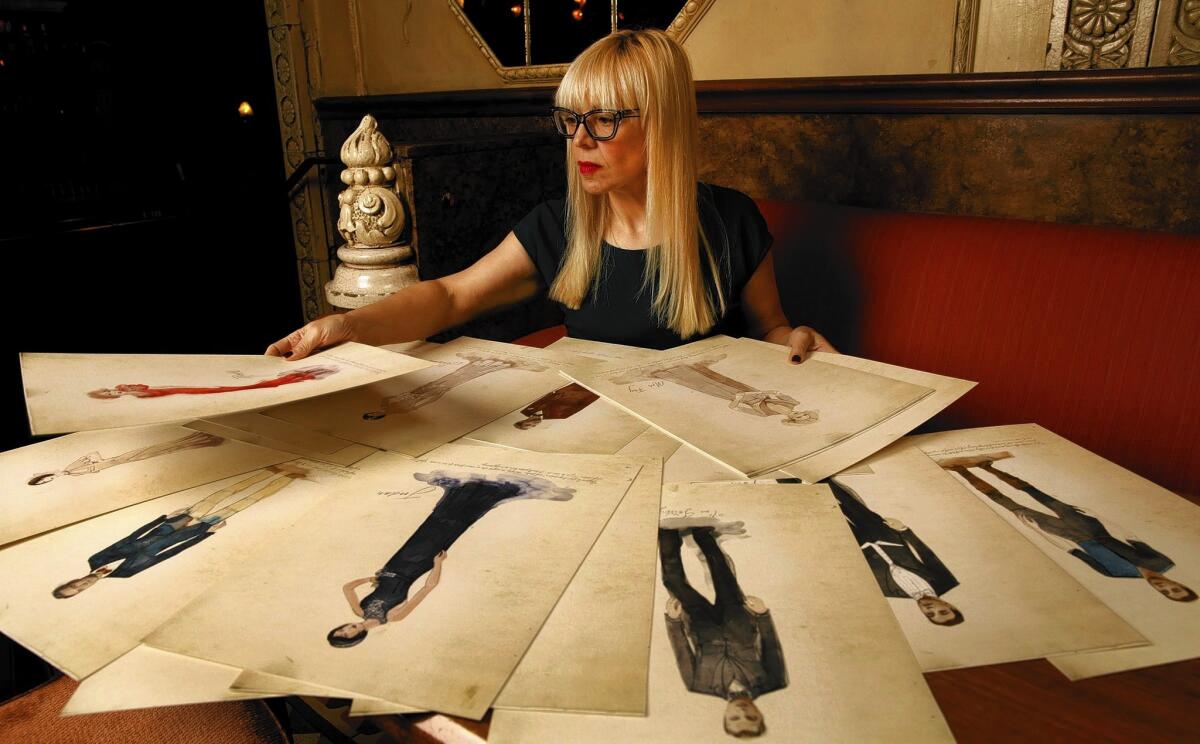The Costumes: Dressing an era for ‘The Great Gatsby’

Two-time Academy Award-winning costume designer Catherine Martin’s luscious and ultra-luxe costumes for “The Great Gatsby” are a stellar fusion of past, present and future. Her husband, the film’s director, Baz Luhrmann, with whom she frequently collaborates (“Strictly Ballroom,” “Moulin Rouge!”), wanted her to ignite a vision not of nostalgia but of what it must have felt like to hear jazz for the first time. The clothes were to showcase the cultural revolution taking place. She acknowledges it was a mighty big job, but with the help of some exceptional resources, it became one that was ultimately quite fruitful. After all, she says of the film’s cast and crew — for which she also was production designer, earning nominations for both roles — “We’re all on the same journey. We’re all in a relay race and all trying to get the Olympic torch lit, and we’re all treading in the same direction. I’m really proud of the work we’ve done.”
Your husband’s directive was that it was fine to use the full 1920s decade for sartorial reference but that he didn’t want it filled with “feather boas and strands of swinging pearls.” He wanted it relevant to today.
Baz wanted to reflect a New York that was discovered through [novelist F. Scott] Fitzgerald’s eyes, and the New York of the 1920s wasn’t a nostalgic place, it was a place that wholeheartedly looked to the future. We look back on the black-and-white photos of that era, and because we see them as our grandfather’s and grandmother’s era there’s a certain nostalgia about it. But, in reality, it was a social and sexual revolution. Enormous social and economic shift. He wanted me to reflect this in terms of the women’s clothes. You have to remember, women up until just that moment were living a Victorian lifestyle. They were wearing ankle-length dresses, and by 1922 there were no more corsets and virtually no underwear under their dresses; it was shockingly revolutionary.
TIMELINE: The Academy Awards through the years
There were multiple big brand names involved in the “Gatsby” costumes. Miuccia Prada designed 40-odd dresses for the big party scenes. How did she react after she watched the film?
I was enormously nervous, but she was really incredibly positive. She loved that they seamlessly melded with all the other clothes we manufactured in-house. The name of the game was to create that ultra-high-fashion edge to those parties, as well as have it be a nice nod to all those designers who came to the fore in the 1920s, Coco Chanel and all the women who were making clothes for their contemporaries. One of the reasons I was so interested in the collaboration between Baz and Miucci is that they’re both well known for their strong references from the past, but their ultimate product always looks very much to the future. It’s a beautiful tension.
What was working with the Tiffany archives like?
What amazing resources. And how wonderful that this company’s patrimony and heritage are recognized and valued. We went there at first because of their incredible archives, but we discovered that Fitzgerald was also a customer and a Tiffany fan, with a direct link to the book. Tom Buchanan gives Daisy a string of pearls worth $300,000, and one of the things in the late 19th century that Tiffany’s promoted was the idea that a string of pearls is a gift of the rite of passage for a young lady. So Fitzgerald was not only a Tiffany customer, but he used the pearls as an example of a very upper-class gift. All the collaborations came out of this kind of organic process and were incredibly happy and fruitful.
What’s the secret to working with a spouse so closely, as two creative people working within such pressure and amid such high sums of money and visibility on the line?
Fighting a lot.
In front of others or privately?
Look, we’re both professionals. It’s not like we’d ever have a punch-up in public. But we’ve been known to have creative debates with our teams around us; it’s not something they don’t know or haven’t seen. But I think we care still what each other thinks, and we care deeply about each other’s opinions, and as a result, if we feel that one of us is not making the right choices or we don’t think we’re going down the right path, creatively, we will bring it up. Sometimes abrasively. But I think the beginning of the end is when you don’t care, when you don’t intercede, when you don’t make a fuss.
More to Read
Only good movies
Get the Indie Focus newsletter, Mark Olsen's weekly guide to the world of cinema.
You may occasionally receive promotional content from the Los Angeles Times.










